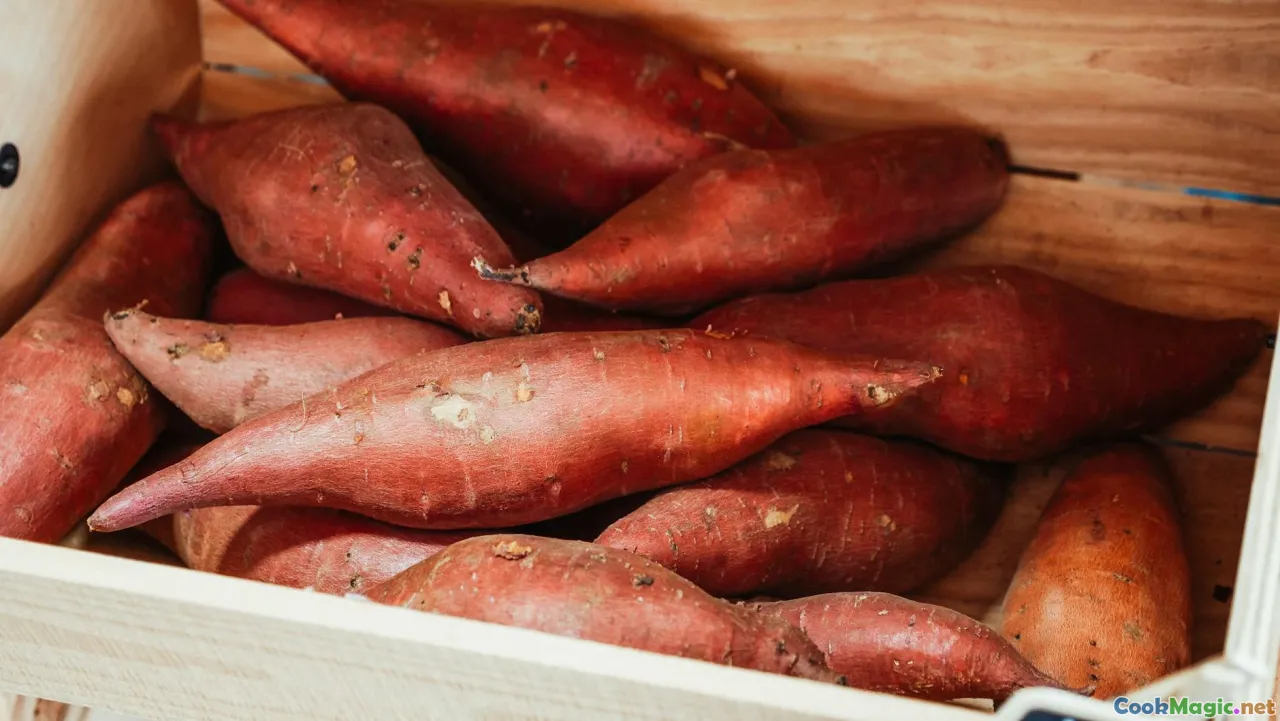Tarot and Yam in Everyday Vincentian Meals
8 min read Discover the rich cultural tapestry of Vincentian cuisine through the vibrant roles of tarot and yam in everyday meals, blending tradition with flavor. April 30, 2025 18:01
Tarot and Yam in Everyday Vincentian Meals
Imagine waking up on a breezy morning in Saint Vincent and the Grenadines, where the aroma of freshly cooked yam and the earthy scent of tarot roots waft through the air. These humble ingredients aren’t just staples; they are woven into the very fabric of Vincentian life, embodying centuries of tradition, resilience, and cultural identity. In this article, we embark on a flavorful journey into how tarot and yam feature prominently in Vincentian cuisine, transforming everyday meals into celebrations of heritage.
The Cultural Significance of Tarot and Yam in Saint Vincent
Roots of Tradition
Saint Vincent and the Grenadines, a lush archipelago in the Caribbean, boasts a culinary landscape shaped by indigenous peoples, African influences, European colonization, and modern innovation. Amid this mosaic, tarot and yam stand out as indigenous roots—ingredients that have sustained generations.
Yam, known locally as "dasheen" or "cocoyam" in some regions, is more than just a carbohydrate; it’s a symbol of life and sustenance. Its starchy flesh, ranging from white to pink to deep purple, is cherished for its rich, nutty flavor and velvety texture. It’s deeply embedded in traditional dishes, festivals, and communal gatherings.
Tarot, often called 'taro' in other Caribbean islands, is a versatile root that is both a staple and a cultural icon. It’s valued for its earthy taste and is often associated with the resilience of the Vincentian people, having been cultivated in the region long before colonial influences.
Historical Context
Historically, tarot and yam were vital in the diets of the indigenous Caribs, who inhabited the islands long before European contact. These roots provided essential nutrients and were cultivated in traditional farming systems that emphasized sustainability and community cooperation.
Over centuries, African slaves brought their culinary traditions, adapting and integrating tarot and yam into local dishes, creating a unique fusion that persists today. The ingredients became symbols of survival and resistance, representing a link to ancestral roots and cultural identity.
Culinary Uses of Tarot and Yam in Vincentian Daily Meals
Breakfast Staples
Start your day with a steaming bowl of roasted yam—a simple yet hearty breakfast. The yam is sliced, seasoned with local herbs, and roasted over open flames or baked until golden and tender. Its warm, sweet aroma mingles with the smoky scent of the fire, creating an irresistible invitation.
Another popular breakfast dish is taro porridge, where grated tarot is cooked with coconut milk, spices, and a touch of sugar, resulting in a creamy, flavorful start that energizes locals for the day ahead.
Main Dishes
Yam and Tarot Stew
One of the most beloved Vincentian comfort foods is the yam and tarot stew, a hearty dish simmered with salted meat or fresh fish, seasoned with herbs like thyme, scallions, and Scotch bonnet peppers. The roots absorb the rich flavors of the broth, becoming tender and flavorful.
The stew is often served with fried plantainsorcallaloo, creating a vibrant plate bursting with textures and tastes. The earthy sweetness of the yam and tarot balances the savory broth, making it a staple during family gatherings or Sunday feasts.
Cassava and Tarot Fritters
Fritters made from grated tarot and cassava are a common street food snack. Mixed with spices and a bit of sugar, then deep-fried to crispy perfection, these fritters are enjoyed with a dash of hot sauce or tangy lime juice.
Side Dishes and Snacks
Boiled yamseasoned with a splash of lime and salt is a common side dish accompanying grilled fish or jerk chicken. Its soft, moist texture complements smoky, spicy flavors.Tarot chips, thinly sliced and fried, are a popular snack, offering a crunchy alternative that highlights the root’s earthy flavor.
Cooking Techniques and Flavors
Traditional Methods
Cooking tarot and yam traditionally involves open-fire roasting, boiling, or steaming. These methods preserve the natural flavors and textures of the roots, allowing their earthy sweetness to shine.
In many homes, a cassava and tarot pot is a central feature, where ingredients slowly simmer in a seasoned broth, developing deep, complex flavors.
Modern Twists
Contemporary Vincentian chefs experiment by incorporating tarot and yam into fusion dishes—think taro-infused smoothies or yam-based salads with tropical fruits. However, the heart remains rooted in tradition, with many recipes still prepared as they have been for generations.
Personal Reflections and Cultural Insights
Growing up in Saint Vincent, I remember the comforting sight of my grandmother’s kitchen, where a large pot of yam and tarot stew simmered, filling the air with an inviting aroma. It wasn’t just food; it was a symbol of community, resilience, and love.
Sharing these dishes with friends and family during festivals or casual Sundays fostered a sense of belonging. Each bite carried stories of ancestors and the enduring spirit of the Vincentian people.
The Emotional Connection
Yam and tarot are more than ingredients—they are carriers of history and emotion. They evoke memories of childhood, family gatherings, and cultural pride. This connection transforms simple meals into meaningful rituals that honor tradition.
Conclusion
In Saint Vincent and the Grenadines, tarot and yam are not just staples—they are cultural icons that tell stories of survival, adaptation, and identity. From hearty stews to street-side fritters, these roots nourish the body and soul, embodying the resilience and vibrancy of the Vincentian people.
Whether you are a culinary explorer or a seasoned food lover, embracing these humble ingredients opens a window into the soul of Caribbean cuisine, where flavor, history, and community intertwine in every bite. So next time you taste a tender yam or earthy tarot, remember—you’re partaking in a rich tradition that spans centuries and connects generations.
Embrace the roots, savor the stories, and celebrate the timeless flavors of Vincentian cuisine!









